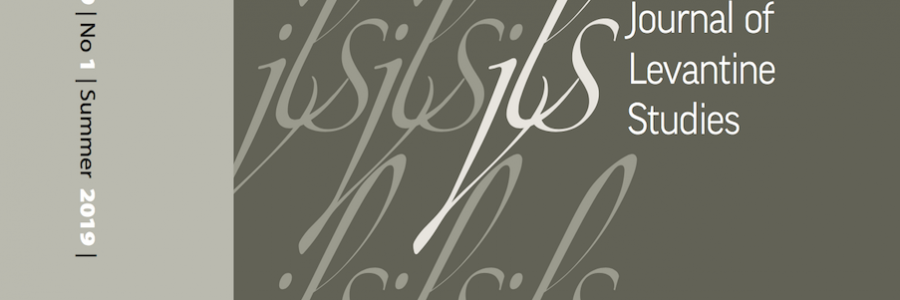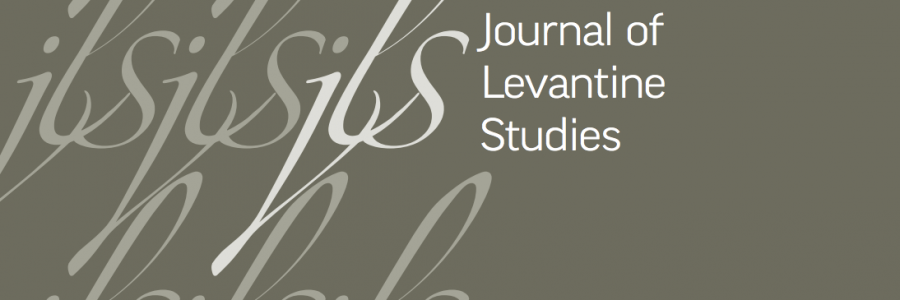-
Add to cartQuick view
Ice Cream in the Car
Free!A short story by the Palestinian author Tamara Naser. She studied English literature, film, and psychology, has an MA, and is a certified bibliotherapist, providing therapy through stories and writing, at Haifa University.
Add to cartQuick view -
Add to cartQuick view
The Gate to the Body
Free!A short story by Sheikha Hlewa, who was born in 1968 in an unrecognized Bedouin village near Haifa. An author, poet, and educator, today she lives in Jaffa. She has an MA in Arabic and Islam from Tel Aviv University and is an instructor and curriculum developer. Her short stories have been translated into many languages and published in journals and websites in the Arab world and Israel. She has published four books (in Arabic): Outside of the Seasons I Learned How to Fly, poetry (Jordan, 2015); Ladies of Darkness, short stories (Jordan, 2015); The Windows Are Broken Books, short stories (Jordan, 2016); Invitation No. C345, short stories (Italy, 2018).
Add to cartQuick view -
 Add to cartQuick view
Add to cartQuick viewArabic Language among Jews in Israel and the New Mizrahi Zionism: Between Active Knowledge and Performance
Free!According to Command of Arabic among Israeli Jews, a report by Shenhav et al. (2015), the vast majority of the Jews in Israel neither speak nor understand the Arabic language. Proficiency in Arabic has declined dramatically with succeeding generations. While slightly more than half of the participants in the study believe that knowledge of Arabic is important, the majority of the participants also stated that its importance is security related. This bleak picture of Arabic as a vanishing language among Israeli Jews is related to the protracted ethnonational conflict, which has divided “Jews” from “Arabs.” This is in contrast to the recently expanding number of Jewish Israeli musicians, mostly of the third generation (the grandchildren) of migrants from Arab countries, who sing in Arabic and receive wide local and international exposure. In this article I examine the discrepancy between the low rates of proficiency and interest in the Arabic language and the growing number of singers and audiences in Israel who appreciate music sung in Arabic. I first summarize the findings of the report. I then examine Jewish Israeli musicians who perform in Arabic, focusing on Neta Elkayam and Ziv Yehezkel, to consider the possibilities of a cultural dialogue between Israeli musicians and local Palestinian, as well as regional, Arab audiences. I discuss the political significance of these performances, both in the context of Mizrahi identity among the third generation and in relation to local and regional Arab audiences. In the last section, I tie these musical performances to the policy of the right-wing government in Israel and the rise of a new Mizrahi Zionist discourse in relation to the Arabic language and culture. Finally, I point to the possible negative consequences of this cultural shift for Palestinians.
Add to cartQuick view -
Add to cartQuick view
Names under Supervision: Israeli Linguistic Regulation of Arab Streets – Turʿan as a Case Study
Free!The present article contributes to the local study of street signs, and more generally, of majority and minority language representation. It analyzes the street signs set up by the Turʿan municipality in the North of Israel during the term of the town’s Jewish mayor Yaakov Zohar (2008-2013), shedding light on the impact of top-down political processes on the design of Arab space, its interpretation by a municipality headed by an agent of the establishment, and the namings’ implications for the Arab minority’s spatial socialization. Through the names selected and the visual and orthographic characteristics of the linguistic landscape, the article highlights the politics of shaping cultural and historical identity in physical space. The visual characteristics examined are related to the visibility of the two languages—Arabic and Hebrew—or more specifically, to the representation of one as opposed to the deliberate marginalization of the other. My reading of street signs is informed by critical toponymy and semiotics, which emphasize the ideological meanings inherent in the depth structures of names and visual communication products. I consider the initiative by a Jewish mayor to name the streets of Arab Turʿan an attempt to influence the spatial awareness of its Arab inhabitants in keeping with the values of the establishment.
Add to cartQuick view -
Add to cartQuick view
Vol. 9, No. 1 (Summer 2019)
Free!Add to cartQuick view -
Add to cartQuick view
Vol. 9, No. 2 Winter 2019
$45.00Add to cartQuick view -
Add to cartQuick view
Yasir Suleiman, Arabic, Self and Identity: A Study in Conflict and Displacement. New York: Oxford University Press, 2011. 271 pp.
Yasir Suleiman, Arabic, Self and Identity: A Study in Conflict and Displacement. New York: Oxford University Press, 2011. 271 pp.
$5.00Free!Add to cartQuick view -
 Add to cartQuick view
Add to cartQuick viewAbandoning Language: The Project of Arab-Jewish Subjectivity in Sami Michael’s Arabic Fiction of the 1950s
Free!Sami Michael is a well-known, Iraqi-born Israeli writer whose best-selling works have been widely discussed in both public and academic discourse. However, long before writing in Hebrew, Michael published several short stories and articles in his native Arabic during the 1950s. This article examines a selection of Michael’s Arabic stories and frames them as the genesis of his representations of Arab-Jewish subjectivity, while also emphasizing the importance of the fact that a well-known Israeli writer began his literary career in Arabic. I argue that to sketch out a fuller picture of Michael’s literary voice, we must take into account the ways in which his early Arabic writings were precursors of his later Hebrew novels and how the process of abandoning his native language was formative even before his switch to Hebrew. The short stories discussed here all confront the ambivalences and, importantly, the possibilities that characterize Michael’s imagined Arab-Jewish subjectivity, suggesting it to be a literary sensibility fraught with a paradoxical sense of simultaneous potential and dissolution.
Add to cartQuick view -
 Add to cartQuick view
Add to cartQuick viewWe can’t understand ourselves without the Arabic: Dreams in Cambridge (2009)
In this paper I discuss the question of Jewish-Arab identity, its intergenerational differences, its different definitions in Hebrew and Arabic, and the differences in its usage in modern times and earlier periods. In Jewish-Arab identity, as in every identity, there is a mixture of self-identification and outer-identification. Whatever one’s reason for identifying as an Arab-Jew—whether related to the historical and cultural background or because one’s family identified this way prior to Zionism and immigration or in defiance of today’s national identities in Israel and the Arab world—it does not “have” to create as strong an objection as it does. However, the objection is understood when it is an outer-identification that flattens differences between historical periods, regions, or differences between the Jews of the Muslim world. In the late nineteenth century, Jewish-Arab identity was an identification with the Nahḍa movement, with the awakening of Arabic literature and language, and it sought to reweave Jewish-Arab identity, written culture, and memory into the Arab revival, or at least into the Arab literary imagination. Later, in the first half of the twentieth century, Jewish-Arab identity was an identification with local Arab nationalism in the different Arab lands, seen as a potential for a large-scale project, started by the intellectual elite, that would make Jews an integral and equal part of their societies. In the second half of the twentieth century, after 1948 and after immigration, mostly to Israel, Jewish-Arab identity was an identity that expressed criticism of both national projects, Jewish and Arab, their marginalization and nonacceptance of the Arab-Jews, and their exclusive and oppressive nature.
$5.00Free!Add to cartQuick view
- Home
- About JLS
- Issues
- Vol. 9 No. 1 | Summer 2019
- Vol 8 No 2 Winter 2018
- Vol. 8, No. 1: Summer 2018
- Vol. 7, No. 2: Winter 2017
- Vol. 7, 1: Summer 2017
- Vol. 6, Summer/Winter 2016
- Vol. 5, No. 2 Winter 2015
- Vol. 5, No. 1 Summer 2015
- Vol. 4, No. 2 Winter 2014
- Vol. 4, No. 1 Summer 2014
- Vol. 3, No. 2 Winter 2013
- Vol. 3, No. 1 Summer 2013
- Vol. 2, No. 2 Winter 2012
- Vol. 2, No. 1 Summer 2012
- Vol. 1, No. 2 Winter 2011
- Vol. 1, No. 1 Summer 2011
- Blog
- dock-uments
- Subscribe
- Submit
- Contact






